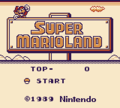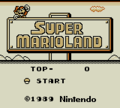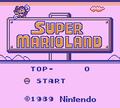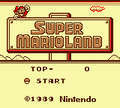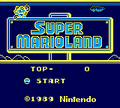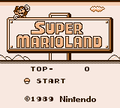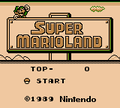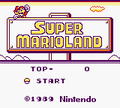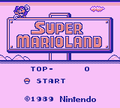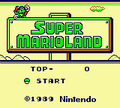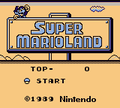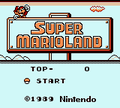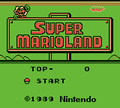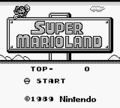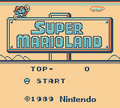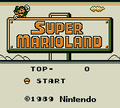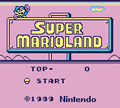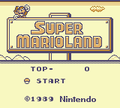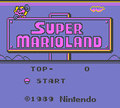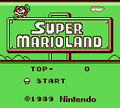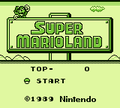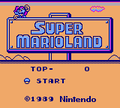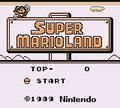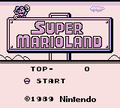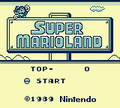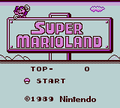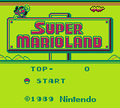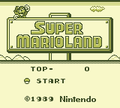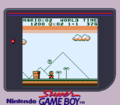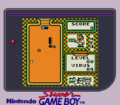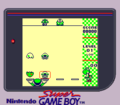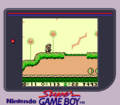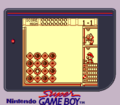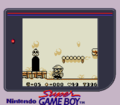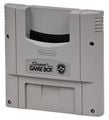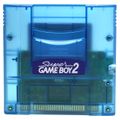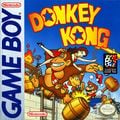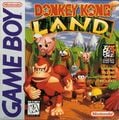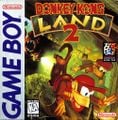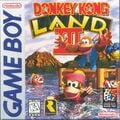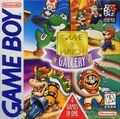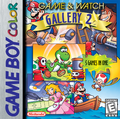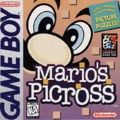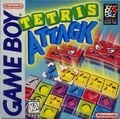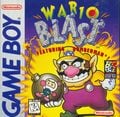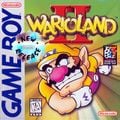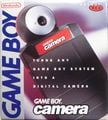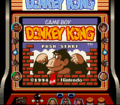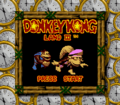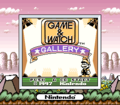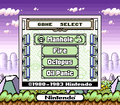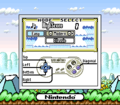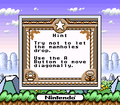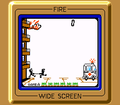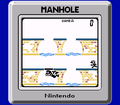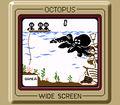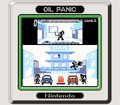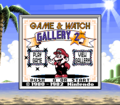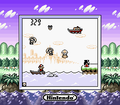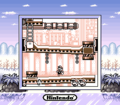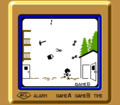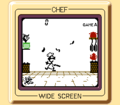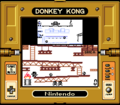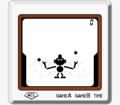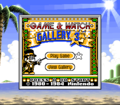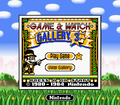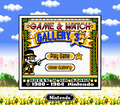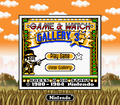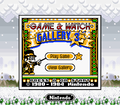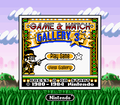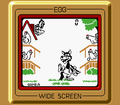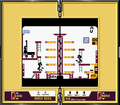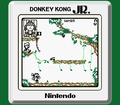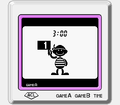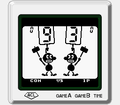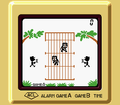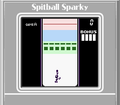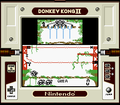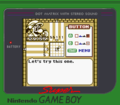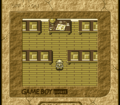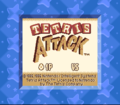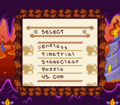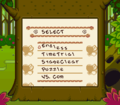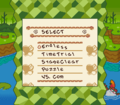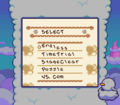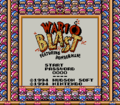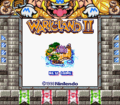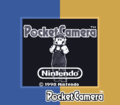Super Game Boy
Template:System-Infobox The Super Game Boy is a special adapter cartridge designed for use with the Super Nintendo Entertainment System that was released in 1994. It allows players to play Game Boy games on their television screen through their Super Nintendo. It can also play certain Game Boy Color games, but only ones that are compatible with the original Game Boy. In Japan, a remodeled edition was released known as the Super Game Boy 2. There were additional border features as well as support for a link cable.
The successor to the Super Game Boy is the Game Boy Player.
As the dimensions of the Game Boy's screen are different from those of most televisions, a border is needed on the screen. Certain games, mostly ones that came out around or after the time the Super Game Boy was released, such as Donkey Kong, take advantage of the Super Game Boy, and display customized borders when played. Many games also allow for enhanced sound effects and music when played on the Super Game Boy.
Certain games, such as Wario Blast: Featuring Bomberman!, take additional advantage of the Super Game Boy, and allow for multi-player with a second controller. It can even take advantage of Hudson Soft's Super Multitap but no player 5.
One flaw of the original Super Game Boy is that it is not capable of linking up with other Game Boys or a Game Boy Printer. It is also slightly overclocked, which explains why games played on it tend to have higher-pitched sounds compared to playing them on a regular Game Boy. These issues were fixed with the release of the Super Game Boy 2.
When the player presses the and
buttons on the controller, the Super Game Boy menu can be brought up, allowing the player to alter the border or the controller's button mapping. The player can also assign a color palette to the game, as detailed in the section below.
If the player were to leave a game on the Super Game Boy sitting for a few minutes, screensaver-like animation would come from the screen border. Notably, Mario, Princess Peach, and Luigi appear in one of these border animations. Mario will come spinning up from the lowest window and stand on top of it; if the player waits long enough, Mario will fall asleep. While he is asleep, Peach will appear from the window on the right. Mario wakes up but misses Peach, instead to have a racecar drive out and spin him around. After this, Mario falls asleep again. Eventually, a spaceship that looks almost identical to the ones in the background of the Muda Kingdom of Super Mario Land, only much smaller, circles Mario. He wakes up and then eventually falls asleep again. The animation ends with Luigi coming down from the top window on a rope and pulling Mario back up with him.
Compatibility
Here's a compatibility chart. Any game only for Game Boy Color will boot but refuse to play further, just like the Game Boy.
| Example Cartridge | Usual Color | Game Boy mode | Super Game Boy mode | Compatible | |
|---|---|---|---|---|---|
| Original Game Boy cartridge | 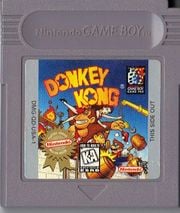
|
Grey | See below | ||
| Game Boy Color cartridge (Black) | 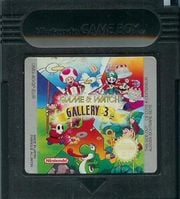
|
Black | See below | ||
| Game Boy Color cartridge (Clear) | 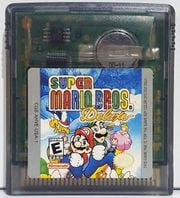
|
Clear |
Color palettes
The main feature of the Super Game Boy is to give the games color. While SGB Enhanced games come with their own special colors, players can assign their own colors by accessing either the Color Palette Window or the Custom Color Window. The Color Palette Window allows the player choose one of 32 different system color palettes, while the Custom Color Window lets the player adjust the color palette available. A password system at the top of the Custom Color Window saves the changes to the color palette. Pressing during gameplay will switch between the game's default color palette and any other color palette the player has selected or created. While the games were given color palettes, many of those given were very garish color schemes. Examples include bright pink and yellow or bright yellow and dark blue. If no desirable palette can be found, default black and white can be used.
Special Borders can use up to 64 different colors, while the game screen itself can use up to 10 different colors in Super Game Boy enhanced games with palettes built into the cartridge.
The following images showcase all 32 of the Super Game Boy's stored color palettes from the Color Palette Window, as well as the accompanying passwords as displayed in the Custom Color Window. The Super Mario Land title screen has been chosen to model these palettes.
Nintendo-published games released prior to the Super Game Boy would automatically load one of the above palettes as opposed to the default 1-A palette. Below is a gallery of each game this applies to.
Gallery
Super Game Boy enhanced games
Special borders
Game & Watch Gallery (Fire)
Game & Watch Gallery (Manhole)
Game & Watch Gallery (Octopus)
Game & Watch Gallery (Oil Panic)
Game & Watch Gallery 2 (Modern Parachute)
Game & Watch Gallery 2 (Modern Helmet)
Game & Watch Gallery 2 (Modern Donkey Kong)
Game & Watch Gallery 2 (Modern Ball)
Game & Watch Gallery 2 (Classic Chef)
Game & Watch Gallery 2 (Classic Vermin)
Game & Watch Gallery 3 (Egg)
Game & Watch Gallery 3 (Greenhouse)
Game & Watch Gallery 3 (Turtle Bridge)
Game & Watch Gallery 3 (Mario Bros.)
Game & Watch Gallery 3 (Donkey Kong Jr.)
Game & Watch Gallery 3 (Flagman)
Game & Watch Gallery 3 (Judge)
Game & Watch Gallery 3 (Lion)
Game & Watch Gallery 3 (Spitball Sparky)
Game & Watch Gallery 3 (Donkey Kong II)
Tetris Attack (hidden)
